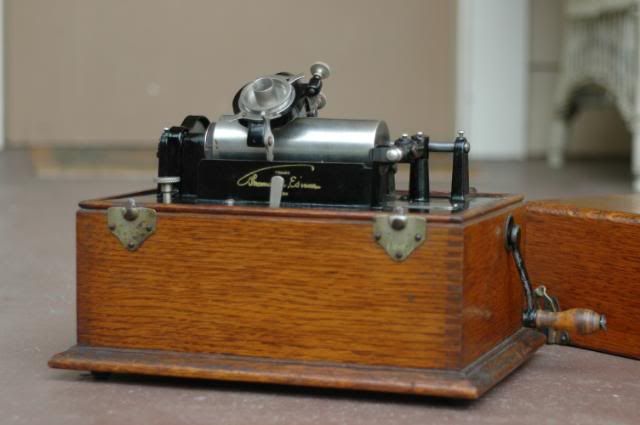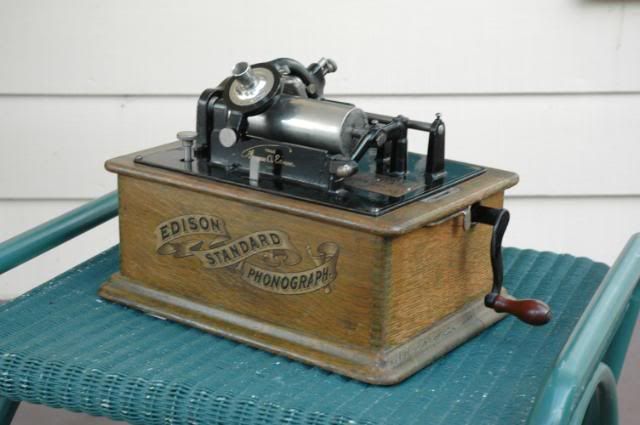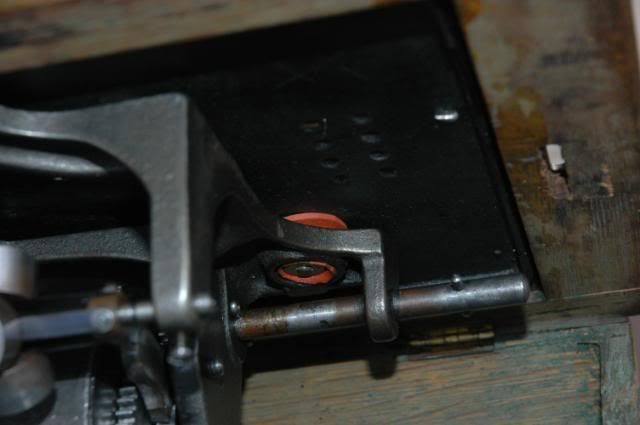I was going to ignore any further posts on this topic until I received the following from gramophoneshane. I hope this message is taken in a positive way because members can and should have disagreements without being disagreeable. This is a safety issue.
From: gramophoneshane
Hi Jack,
I thought perhaps you might like to explain in that thread why Edison springs should not be opened as I show in my video. Is there something Edison & I don't know that you do?
No doubt you've seen the service manual pages I posted?
Did I get it all wrong, or were you just trying to put me down again.LOL
Actually, now I think about it, I think you should publicly apologize to me for making out that my method was wrong and dangerous. I don't want to have to ask for it publicly myself.
Shane.
Background:
A new member who just got his first Edison phonograph asked some basic questions about restoration. I gave him some details that he and other members appreciated. I raised a very serious safety issue with the video that a member posted concerning removing a spring from a phonograph. Most phonograph collectors that have had some experience changing springs agree that it can be a dangerous task. I felt an obligation to point out that video doesn’t represent the typical Edison spring removal. If you simply Google what experienced dealers say about the inexperienced changing springs, almost all of them warn or caution, don’t do it.
If this or any new member changed that Edison spring as shown in the video, he could be seriously injured. So this kind of warning is more important than hurting anyone’s feelings. In fact, if this message is deleted, which I hope it will not be, then we all lose. More important one of our newest members could lose an eye or the tip of his finger or other injury.
I will now respond to gramophone’s question to me so that he does not have to ask me for a public apology as he says he will if I don’t reply.
The typical Edison spring (and specifically Dick’s) example is much more powerful than the weaker Thorens spring shown in gramophoneshane’s (GS) example. GS’ example comes from an Australian assembled Rexonola (leading brand in Australia) using imported a Thorens motor/spring. I responded to GS’ post about the burlap bag so I won’t repeat the entire text here, it is not use to let the spring unwind uncontrolled, it is used for safety purposes while holding onto the spring firmly under control, letting the energy out a little at a time.
I won’t dignify GS comments about old wives tales, & ‘rumours’ started by repairmen to drum up business or other editorial comments he makes.
GS provides examples from the Edison diamond disk service manual.
- The cover of the manual says … it is for the use of those engaged in the handling and care of such mechanisms. Others should not try to apply the instructions contained herein if it is possible to engage the services of an experience repairman.
- On page 6 the instructions (for a broken spring) say … can now be pulled away along the cover but you are cautioned to do this slowly and carefully to prevent too sudden release of the broken coils of the spring. It is advisable to use gloves and also to protect clothing from oil coming from the spring. Holding the case downward inside a barrel, if one is at hand will afford protection.
Note GSs video shows bare hands, no protection scenario. Not what Edison intended.
I agree if it’s good enough for Edison, I’d follow those instructions and be safe.
I don’t want to continue this debate or sabre rattling with GS as so often happens with other members. Our members are smart enough to make their own decisions and do their own research. But above all else we have some obligation to newcomers who expect experience includes concern for safety rather than winning an argument.
![[The Talking Machine Forum - For All Antique Phonographs & Recordings]](/styles/we_universal/theme/images/the_talking_machine_forum.png)



